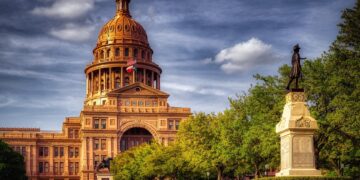Rates and how many times will they cut rates but the reality is the carage in the bond markets has just begun and we are far more likely in for many more years of higher rates and higher inflation and the US Treasury Market is about to take another big hit the most
Urgent thing that is happening in the short term for investors to watch out for is the unwind of hedge funds trading treasuries in what is called the basis trade as of right now hedge funds are responsible for providing the necessary liquidity in the US Treasury Market this is because trading firms have been
Engaged in something called the basis trade for a couple years now this trade has been growing and it is a type of relative value trade in which you buy one thing and you short another thing those two things would be almost identical in terms of their structure
But they would vary slightly in their price by buying one and shorting another it gives you the ability to take advantage of the difference in those prices and through leverage and repeating this trade many many many times you can make risk-free money now if your spidey sense goes off whenever
You hear the words risk-free money that means you’re doing something right because there’s no such thing as the elimination of risk you can only transfer risk and while these trading firms have been providing a necessary service by providing liquidity for us treasuries because they are buying and
Selling so many of these there’s no escaping the fact that this has built up a ton of risk in the financial system by using so much leverage it is also true that when you try to impose regulations to Tamp down on that risk that has already been built up more often than
Not you cause the very unwind you were trying to prevent in the first place more than likely this is not going to result in anything crazy like an overnight collapse of the entire Financial system but what this is likely to do is put more and more stress on an
Already stressed treasury market by removing liquidity and as we are about to see 2024 is not exactly the year in which you want to be removing liquidity from the US treasury market because this year the US government is going to have to issue about $10 trillion in new
Treasuries you read that right $10 trillion in new treasury issuance just this year alone now that doesn’t mean the national debt will be going up by $10 trillion so let’s break this down we’ve got new borrowing and borrowing to replace old existing debt the deficit for 2024 is projected to be about 1.4
Trillion remember the deficit for the US government is the difference between what they spend and what they take in taxes so if all goes according to plan during this year they will borrow an additional $1.4 trillion in order to cover the difference between what they take in taxes and what they spend but
$1.4 trillion is a far cry from $10 trillion so where is the other money coming from over the course of 2024 we have about 8.9 trillion doll worth of government debt that is going to be maturing this means when you look at the total national debt of $ 34 trillion
Almost 9 trillion of that is coming due this year we know they don’t take enough in taxes in order to be able to pay off that old debt which means they have to borrow new debt in order to pay off that old debt to put this into perspective
That means that even if the government this year didn’t borrow anything extra and they ran a z deficit meaning every dollar they spent was not borrowed but it was taxed and they didn’t borrow or spend any extra they would still need to borrow $8.9 trillion just to pay off
$8.9 trillion that is due to get paid off so when we take the $8.9 trillion debt that has to be borrowed just to pay off maturing debt and add on top of that the $1.4 trillion in new debt that has to be borrowed to cover the difference between what they’re spending and what
They’re taxing just this year it means the US government will be borrowing $10 trillion plus just this year alone it is true that United States government bond interest rates dropped over the end of 2023 but looking at the longer term Trend and considering how much more they’re going to have to continue to
Borrow into the near future it is almost a certainty that rates go up from here that is true whether we’re looking at short-term debt like the 2-year or whether we’re looking at something in the middle like the 10year or long-term debt like the 30-year and this is of course assuming that there’s no
Recession this year or no unexpected spending that the government has to do because if there’s a financial crisis if there’s a banking collapse if there’s a recession usually what happens is tax revenues plummet which means they have to borrow even more to spend just what they’re planning on spending and even
More than that if they plan on spending even more now very few people take a look at this situation and think oh this is sustainable this can just continue forever so where does this leave us over the next 5 years over the next 10 years well counterintuitively we are likely
Going to see two things that look like they can’t exist at the same time number one we’re going to see the Federal Reserve cut rates and return to quantitative easing on the other hand we’re actually going to see higher interest rates and higher inflation for everybody so how does that work this is
A chart of the federal reserve’s balance sheet which has been declining ever since it peaked in April of 2022 if we continue on the current Pace eventually the government will need to borrow more money than they’ll be able to actually borrow either because there won’t be enough dollars available to lend to the
Government or because their expenses will be so high that they’ll just be broke and they won’t be able to borrow enough but obviously it won’t come to this the fed’s balance sheet here instead of moving down will start moving back up again the Federal Reserve is the
Central bank and when they buy assets are primarily buying us treasuries from the open market buying treasuries like the 30-year or the 10year from Banks what banks do with this cash most often is they turn around and lend that new cash back to the US government by buying
A new treasury in this way banks operate as the middlemen between the Federal Reserve and the federal government so when the fed’s balance sheet goes up from something called quantitative easing even though banks are in the middle of this process it essentially means the Federal Reserve is printing
Money loaning it to the federal government and then the federal government owes those dollars back to the fed this is a way for the government to get cheaper debt because they’re able to borrow at lower rates when the Federal Reserve is doing this most often quantitative easing like this is also
Happening during times where the Federal Reserve lowers the federal funds rate now I said before that this would likely result in higher rates for everybody so if the Federal Reserve is lowering rates why would that mean higher rates for people like you and I so far in the year
Of 2024 the US government has spent $1.6 trillion $500 billion of that has been borrowed but this is happening while interest rates are historically High and the longer interest rates for the government stay high the more expensive that spending becomes for them but if the Federal Reserve steps in and starts
Printing money to loan to the government again then that borrowing for the government actually gets cheaper as the cost of borrowing goes down for the government it makes spending more cheaper and cheaper as the government is able to spend more and more from borrowing money that’s been printed into
Existence by the Federal Reserve what do you think that does to prices it pushes them up which means a return to more inflation and for anybody who cannot borrow directly from the Federal Reserve it means you’re borrowing from private lenders who actually care about getting a profit on their money which means that
When inflation continues to move higher from The increased spending private lenders like mortgage lenders auto loan lenders credit card interest rates are all going to be moving higher in order to compensate for the increased inflation just to put it very simply when the FED lowers rates and restarts
QE as a way to make sure the government doesn’t default it will mean that the government can actually borrow and spend more as the government borrows and spends more they’re actually spending money that has been printed into existence all that new money pushes prices higher as inflation soar yet
Again private lenders for forms of debt like mortgages and auto loans and credit cards will demand higher and higher interest rates so that they’re not getting burned on their purchasing power and those interest rates will go higher this is in line with the 40-year debt cycle which started in 1940 with
Inflation and interest rates moving higher for 40 years until 1980 until they peaked out when the next phase of the debt cycle started an interest rates and inflation started moving lower for the next 40 years until they bottomed out again in 2020 again 40 years later
Which means we have now started the next phase of the long-term debt cycle with inflation and interest rates moving higher yet again this lines up with the long-term US debt to GDP cycle as well with the early 40s showing the US debt to GDP ratio peaking at about 120% and
Then moving down for the next 40 years bottoming in 1980 at around 31% for 40 years after that the debt to GDP ratio Rose yet again peaking again around 120% which means another deleveraging is due which only happens through deflation as a death spiral or through inflation
And if the first couple years of this phase that started in 2020 are any sign we know that the people who are in power are going to choose the inflationary route again like they did the last time so buckle up interest rates are moving higher even if we do experience a
Short-term drop treasuries will continue their move down and inflation will be going up for longer as well like I said earlier you cannot eliminate risk you can only transfer risk but the nice thing is in financial markets there are unlimited ways to transfer risk away from your portfolio if you do not know
How to hedge yourself and protect your portfolio from the risks of inflation of deflation of Market crashes then you are susceptible and you may be in the position of the average person that has to wait years sometimes decades for markets to recover it happened to the
S&P 500 just 20 years ago where the market peaked in 2000 and didn’t recover until 2013 it happened again in the 70s and it also happened in the 30s and also happened most famously when the market peaked before the Great Depression in 1929 and didn’t make a new high until
1954 fortunately with a little bit of financial education anybody can learn how to protect their portfolios from inflation from deflation from rates moving up rates moving down from Market crashes being able to hedge their portfolios and their positions and not having to wait and just hope that
Someday it will come back and if you like my help with that join heresy Financial University linked is in the description below as always thanks so much for watching have a great day

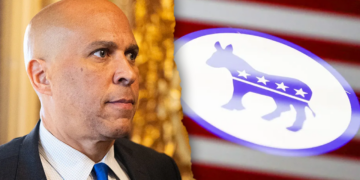
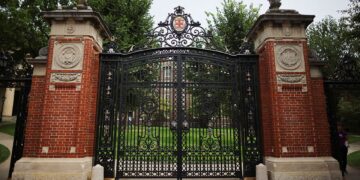

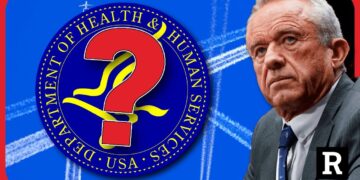
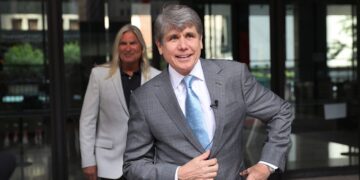
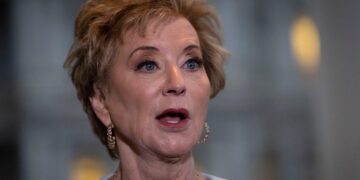

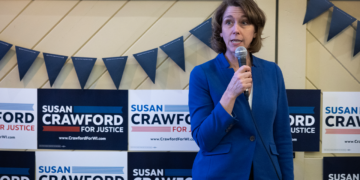
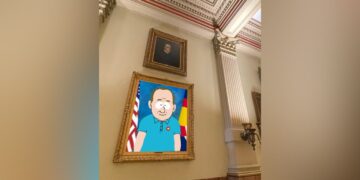
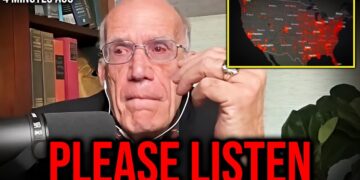






















 Reaction & Commentary
Reaction & Commentary





